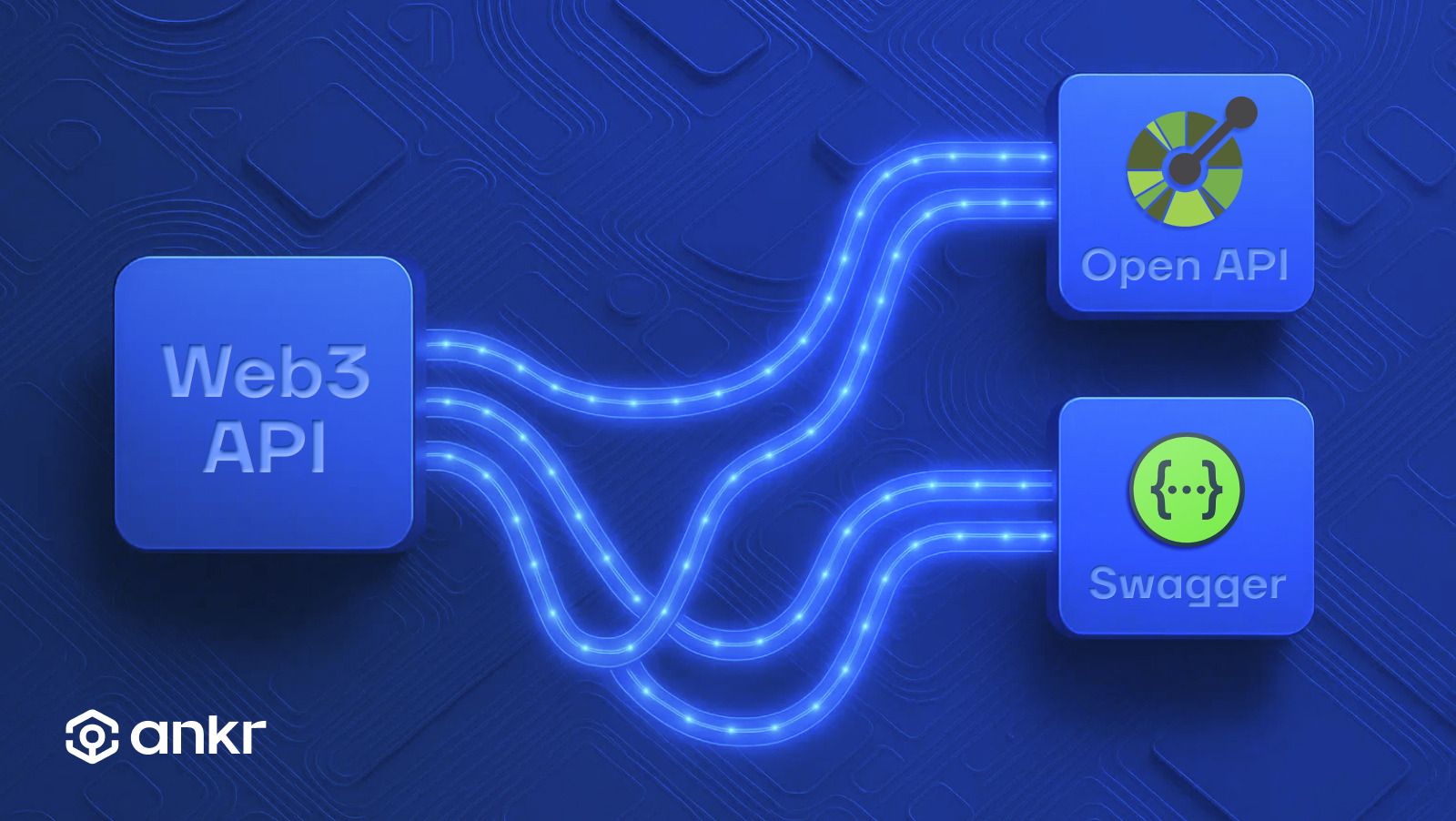Swagger UI Integration Now Available for Ankr's Web3 API Platform

May 5, 2025
5 min read

Ankr has just added a major enhancement to its Web3 API Platform: support for Swagger UI, the popular interface built on the OpenAPI specification. This upgrade is more than just a developer convenience — it marks a shift toward deeper automation, transparency, and power in how developers can interact with Ankr’s services. For builders seeking to maximize efficiency and flexibility, this new functionality will feel like a breath of fresh air.
What Is Swagger and OpenAPI?
Swagger is a set of open-source tools built around the OpenAPI Specification (OAS) — a standard for describing RESTful APIs. Together, they make APIs more accessible, interactive, and easier to integrate into complex systems. With Swagger UI, developers can visualize and interact with a platform’s API in a browser, without writing any extra code.
At the heart of Swagger is the OpenAPI spec: a machine-readable format that describes endpoints, input parameters, responses, authentication schemes, and more. This enables tools like Swagger UI to dynamically generate documentation and test interfaces. If you've used Swagger with other SaaS tools or cloud platforms, you'll immediately feel at home.
In the context of Ankr, Swagger UI now acts as a developer-focused command center, offering full programmatic control over Web3 API platform operations.
Why This Matters: Developer Use Cases
With Ankr’s Swagger-enabled interface, the platform becomes much more than a dashboard — it becomes a fully scriptable, automatable environment where backend workflows, CI/CD pipelines, and DevOps processes can seamlessly tap into Web3 capabilities.
Here’s how developers can now take advantage of the Swagger interface:
Access Account Data Programmatically
Gone are the days of navigating multiple dashboard views. Through Swagger, you can:
- Retrieve your balance, usage statistics, referral rewards, and transaction history on demand.
- View, create, or manage your API keys and JWT tokens.
This unlocks automation for teams managing dozens (or hundreds) of services and endpoints.
Easily Monitor & Optimize API Usage
Swagger enables real-time insights into usage data:
- Track blockchain-specific request volumes across protocols.
- Analyze interval-based metrics and identify top consumers.
This data can be used to optimize performance, control costs, and detect anomalies.
Manage Billing and Payments at Scale
Billing integration becomes straightforward:
- Download invoices and payment documents (crypto or Stripe).
- Automate subscription management, including starting, modifying, or canceling service bundles.
No more billing bottlenecks — just clean APIs and straightforward automation.
Fine-Tune Notification Controls
With Swagger, you can programmatically configure alert systems:
- Define thresholds for low balance, usage spikes, or credit depletion.
- Set up and manage alert channels like email, Slack, or Telegram.
This is particularly helpful for teams that monitor uptime or usage across many production environments.
Configure Enterprise-Grade Security
Security should never be an afterthought, and now it doesn’t have to be:
- Configure 2FA, manage email bindings, and handle enterprise-level access controls.
- Adjust team permissions and manage client access securely and centrally.
Organize and Manage Teams
Ankr’s Swagger UI also supports full team management functionality:
- Create and manage team accounts.
- Invite collaborators, assign roles, and monitor team-wide usage.
Whether you’re a solo developer or a multi-team enterprise, these tools can be wired directly into your operational flow.
How to Get Started: Swagger UI Access in Three Steps
Accessing the Swagger UI is simple — but a few preparation steps are required to ensure secure usage.
View the full documentation with screenshots
1. Generate an API Key
To use Swagger, you'll need to create a dedicated API key:
- Go to Settings > Platform Swagger in your Ankr dashboard.
- Click + Create API Key, define a name and validity period (30 days, 6 months, or 1 year), and click Create.
- Copy the key for future use — it won't be shown again.
This key acts as a secure passcode, granting temporary, scoped access to your account’s Swagger interface.
2. Open the Swagger UI
Click Platform Swagger UI in the same menu. This will open the Swagger interface in a new browser tab.
3. Authorize Your Session
In Swagger UI:
-
Click Authorize.
-
In the prompt, enter:
Bearer
(Make sure to include a space between Bearer and your key.)
-
Hit Authorize again, and you're in.
You’re now ready to start executing API calls, right from the browser — no code needed unless you want to automate.
Who Will Benefit Most?
While the Swagger interface is a win for all users, it is especially powerful for:
- DevOps teams integrating Web3 data into CI/CD pipelines.
- Backend engineers building internal tooling or monitoring systems.
- FinOps and billing admins automating reporting and invoice reconciliation.
- Enterprise teams managing dozens of services and users under a single umbrella.
In short, Swagger empowers anyone looking to move fast, reduce friction, and extend Ankr’s API platform into their existing development ecosystems.
Final Thoughts
Ankr’s Swagger integration is more than a new UI — it’s a developer-first interface to everything the platform offers. Whether you're monitoring usage, automating billing, or tightening security, Swagger gives you the controls you need with the flexibility developers love.
For teams building the next generation of Web3 applications, this feature offers real-time control, scriptable access, and deeper integration possibilities — all without ever touching the dashboard.
Join the Conversation on Our Channels!
Twitter | Telegram | Substack | Discord | YouTube | LinkedIn | Reddit | All Links



